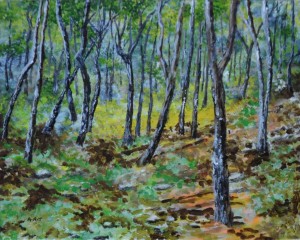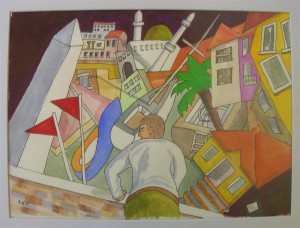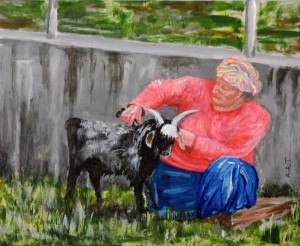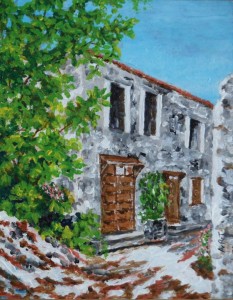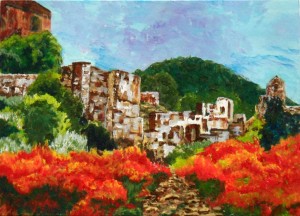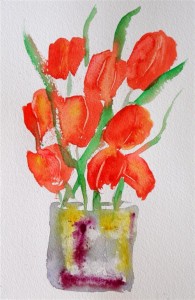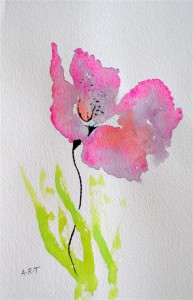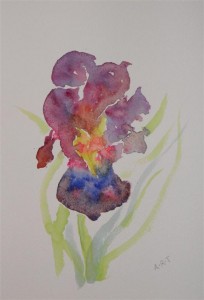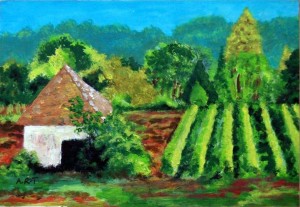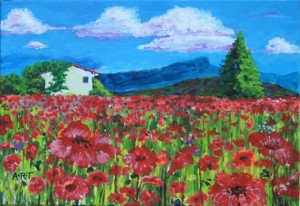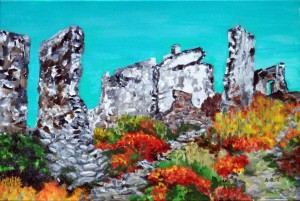It’s been one of those glorious winter days here, just perfect and, unlike those childhood days that seemed to last forever, this one is flying by. Ziggy, our 6 month Vizla ate the fairy lights that Gina hung in the potted trees flanking the porch. I managed to recover and rewire what was left. I repotted a couple of pot-bound plants on the terrace. Early ants have been repelled from colonising the garden wall lights with a combination of ant powder and sealant. I watched my bids fail to win some boat electronics on eBay. This turned out to be a lucky thing as I discovered Paypal were not going to let me access my UK account from here. I read the Sunday papers and replied to the mail and I went into the woods to collect some kindling. Then I painted this.
In 25 minute our neighbours Bob and Pauline are arriving for a steak and kidney pie and I’m cooking the starter. As I said, today is flying by…..
